When most non-comic fans reflect upon the quintessential superhero, i’m quite sure most don’t think of the Flash. Don’t get me wrong, he’s pretty well-known, but as a secondary template of hero. To illustrate, most parodies or satirical works on superheroes cast either a Superman analogue (Captain Hero in Drawn Together, Metro-Man in Megamind) or a Batman analogue (The Cape) or even a Spider-Man analogue ( Danny Phantom ). The only time we see characters modeled on the Flash,it’s as a background character. Do you remember the super-fast “E-Male” from The PowerPuff Girls? Exactly. As far as most people are concerned, the Flash is the Hufflepuff of DC Comics, just there to even out the group portrait. I would say, however,that the reason he’s often regarded as “just another superhero” is because he codifies the genre more than any other character.
Flash: Rebirth #5 January 2010
The comic character known as “The Flash” has been a fixture of DC Comics for several decades, with the title passing between several characters. The first was Jay Garrick, a man who accidentally inhaled “hard water fumes”, which is literally just water with high mineral content. It was the 40’s, they didn’t know better.
Flash Comics #1 March 1940
Flash Vol 1 #123 September 1961
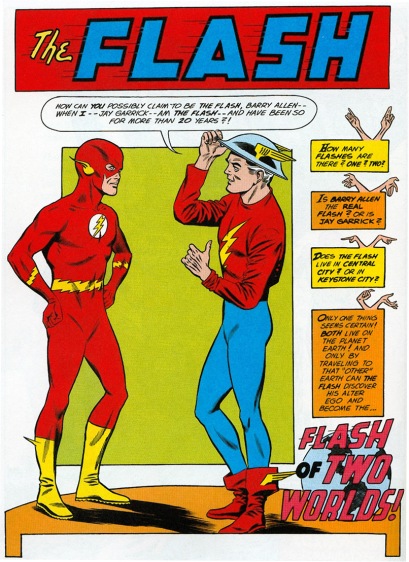 Following him was the most recognizable Flash for comic fans, Barry Allen. Barry’s origin was somewhat less silly: while working at his job as a forensic scientist, a lightning bolt hits a bunch of chemicals in his lab, which douse him and bestow super speed.
Following him was the most recognizable Flash for comic fans, Barry Allen. Barry’s origin was somewhat less silly: while working at his job as a forensic scientist, a lightning bolt hits a bunch of chemicals in his lab, which douse him and bestow super speed.
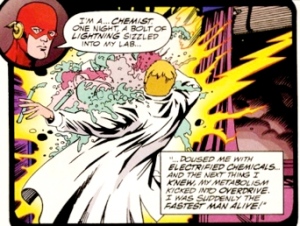
I kind of wonder how would he know if his metabolism changed immediately,but then again i’ve never been hit with lightning
Later on this is retroactively changed into a quasi-mystical energy called the “Speed Force” which chose him as a champion.Personally, I prefer the lightning bolt; the idea of speed being a “force” is kind of stupid. After Barry, a kid named Wally West later had the exact same accident befall him, which allowed him to become Barry’s inventively named sidekick Kid Flash.
When Barry “died” ( long story ) Wally replaced him. Wally is the same Flash in the animated series Justice League; he was used due to his more lighthearted nature in comparison to the other, more dour, Leaguers. As stated, Flash has always been the good ole standby for the Justice League,being a member of the very first incarnation and even being part of the predecessor to the league: the Justice Society of America.
One thing that’s important to remember about the superhero genre is that it’s a) relatively new b) highly derivative. The first appearance of Superman, the first character to be considered a superhero, was in the 1932, which was after pulp heroes such as The Shadow and Zorro. Both characters have been retroactively deemed superheroes in pop culture due to having features such as secret identities, outlandish costumes,and superior abilities. That kind of challenges the whole “first superhero” title Superman holds. The genre as a whole draws mostly from classical narratives like Gilgamesh, which told tales of men with extraordinary abilities. Superman was based on the mythical strongmen Samson and Hercules.
His suit was made to look like a “space-man’s” according to his creators Jerry Siegel and Joe Shuster, something akin to the outfits from the Flash Gordon pulp series. They even threw in some circus performer aspects, specifically the outside undies and the cape. It’s often claimed that when it comes to writing, there are no original ideas, which is definitely true of Superman. Not to say he’s not a unique character, it’s just easy to trace his inspirations, like most major superheroes. Batman had clear inspiration from the shadowy, morally ambiguous pulp heroes who preceded the genre, not to mention some Gothic horror influence in his early stories ( particularly the early design for his costume ). The modern Green Lantern mythos wouldn’t be out of place in Star Wars or any other space fantasy story. Pretty much any character could be thrown into a different genre with only a few changes, especially since many characters are only superheroes due to association with others (John Constantine, for instance).
The genre links several disparate themes into a hodgepodge whole due to loose narrative conventions (motivation, costumes, etc). While most have many of these themes in common, superheroes are still defined primarily by presupposition. What’s so unique about the Flash and his world is that it hits every convention nail on its head with as little variation as possible. His initial origin is as comic booky as they come: a freak lab accident bestows powers. It has the sci-fi aspects present in most superhero stories, which always make sure to incorporate as little science as possible. Its the most expedient of superhero origins, with little in the way of allegory.There isn’t even a motivation given for his heroism; his job as a forensic scientist makes it a given. Barry Allen’s quickness to heroism ( pun unintended ) is lauded by Batman who once said “he is the man i hope i would have been if my parents didn’t die”. His simple transition into heroism only makes sense in a genre where becoming a hero is the only real option.
In addition, the Flashes just look superheroic, with their bright primary colored suits with identity concealing masks. Even super speed itself is such a uniquely supeheroic power: while there are super fast characters in myth, their speed is often but one facet of their power. The Flashes are all about being fast, to the point where speed is their whole motif. Flash is one of the first superheroes to be fully formed from the genre itself. Unlike most other superheroes, the Flashes are characters that only makes sense as superheroes. Could you imagine a hard-boiled noir with a bucket-headed speedster? What about a space opera with a super fast forensic scientist? Of course not; that’s just silly. The Flash could only be a superhero.
Final Crisis: Rogues Revenge ( 2008 )

Flash’s rogues gallery follows suit by being mostly comprised of guys who literally could have done ANYTHING more productive than being villains, yet became villains anyway ( they’re even called “The Rogues” ). For example, one of his most persistent ( if not quite effectual ) villains is Leonard Snart aka Captain Cold, the eskimo of pain! This guy stole a cyclotron gun that slows molecules in objects, making them freeze.
Showcase #8 June 1957
 Imagine all of the practical uses of such a thing; it would probably revolutionize the refrigerator industry. So of course he decides to dress up like a fucking eskimo, try to rob banks and occasionally try to shoot the fastest thing in the world with a gun. That won’t even kill him, mind you. Not that he would even dream it, he only wants to fight the Flash, not kill him.
Imagine all of the practical uses of such a thing; it would probably revolutionize the refrigerator industry. So of course he decides to dress up like a fucking eskimo, try to rob banks and occasionally try to shoot the fastest thing in the world with a gun. That won’t even kill him, mind you. Not that he would even dream it, he only wants to fight the Flash, not kill him.
Cold treats being a super-villain like a role in a play; the goal is to keep the conflict going, not end it. At one point, he’s questioned by a Central City police officer who lampshades the impracticality of his line of work, to which he succinctly responds “You smoke cigarettes. We all do things that are impractical“. He’s joined by fellow Rogues Trickster, Captain Boomerang, Heat Wave and others, all of whom wield advanced technology with the sole purpose of dicking around Central City. Captain Cold acts as the team’s director, teaching all of them how to play their parts appropriately. When a villain called Inertia tricks the Rogues into killing the Flash ( long story ),the Rogues are immediately remorseful and when Flash comes back to life, as per his contractual immortality, he not only apprehends Inertia, he delivers him to the Flash in order to make amends. It would be hard to imagine, say, the Green Goblin performing such an act for Spider-Man. There’s even an issue where the Flash goes to a party the Rogues throw just for the hell of it.
Flash #19 January 1988
The relationship the Flashes have with their Rogues can be summed up in this clip from the Justice League Unlimited episode Flash and Substance ( February 11 2006)
Whereas most comic franchises have been trying to distinguish their specific brands from usual superhero fare, the Flash franchise chooses to actually emphasize its entrenchment in the genre. This is especially important in the Geoff Johns guided DC world of the 2000’s. Geoff engineered an overall return to the Silver Age of comics, with all of the old heroes returning (Green Lantern Hal Jordan, Ray Palmer aka The Atom, etc) which began with the resurrection of Barry Allen.
For those who don’t know, the Silver Age of Comics refers to a time period between 1956-1970, during which the genre was at its most whimsical.
One could compare it to the Age of Romanticism in Western art, which focused on grandiose narratives and larger than life characters. The Flash mythos has been used to great effect to reconstruct the conventions of the Silver Age. For example, Captain Cold was revealed to have been physically abused as a child, inspiring his chilly demeanor (pun intended). Rather than turn this into a deconstruction of the usual super-villain motivation, it instead adds depth to the character and casts his decision to be a super-villain as a method of escapism. Captain Cold is still the goofy looking guy from the 60’s, he just happens to have a less happy childhood than imagined. Just as being Captain Cold allows Leonard Snart to enjoy a fantasy unattainable in regular life, reading superhero comics allows a reader to enjoy a world outside of their own.
While deconstructive series such as The Watchmen (1986) qualify the structural issues of the genre, reconstructive series like The Flash remake them even better than before. The Flash mythos coheres modern superhero conventions with the old, while still remaining escapist. Flash fights crime because he’s a superhero, and his villains commit crimes because they are villains. Nothing too confusing. As Shakespeare once said “All of the world is a stage and we’re all players”
For more posts on comic book superheroes:
Ben Affleck as Batman: Why So Serious?
Bat In The Belfry: Batman as a Heroic Psychopath
Superstitious and Cowardly Cops: Police Corruption in Gotham City
Superman as Defined by Lex Luthor
From Comic To TV: Green Arrow as Adapted into CW’s “Arrow”
Journey of Peter Parker from Amazing Fantasy to Amazing Spider-Man
The Best Spider-Man Issue Ever/Why Spider-Man Is A Classic Anti-Hero
For more info on Flash:
http://tvtropes.org/pmwiki/pmwiki.php/Main/TheFlash http://dc.wikia.com/wiki/Flash
Recommended Reading
The Flash live action series (for a look at the cons of adapting this character in other mediums)
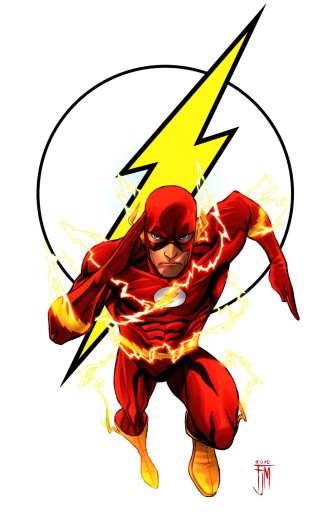





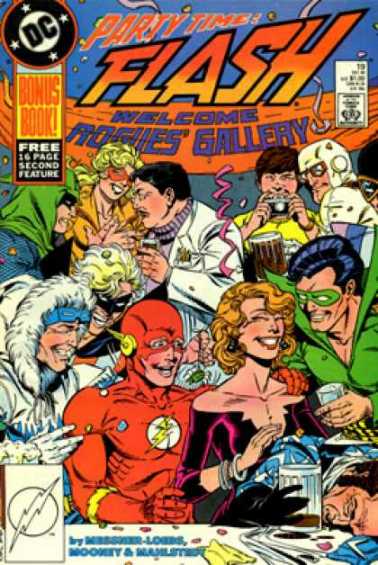
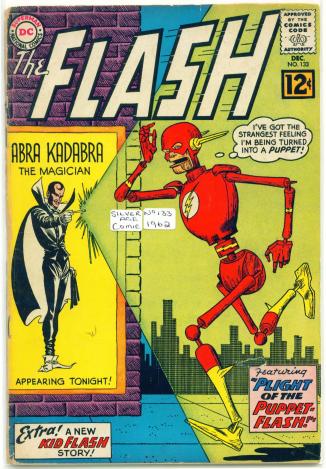
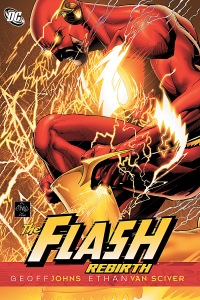
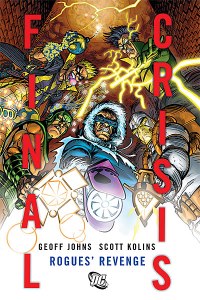

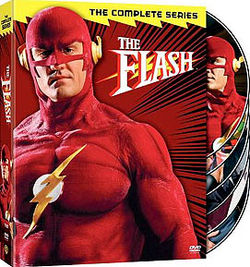
Pingback: From Comic to TV:Green Arrow as Adapted Into CW’s “Arrow” | World Within Logos
Pingback: Batman as a Heroic Psychopath | World Within Logos
Pingback: Iron Man: Real American Hero | World Within Logos
Pingback: Three Forms Of Comedy As Seen Through Justice League | World Within Logos
Pingback: The Lois Lane Effect | World Within Logos
Pingback: Superman as Defined by Lex Luthor | World Within Logos